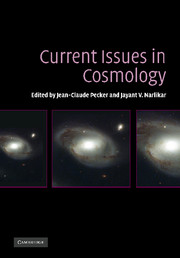Book contents
- Frontmatter
- Contents
- List of contributors
- Preface
- Part I Observational facts relating to discrete sources
- Part II Observational facts relating to background radiation
- Part III Standard cosmology
- Part IV Large-scale structure
- Part V Alternative cosmologies
- Part VI Evidence for anomalous redshifts
- 15 Anomalous redshifts
- 16 Redshifts of galaxies and QSOs: The problem of redshift periodicities
- 17 Statistics of redshift periodicities
- 18 Local abnormal redshifts
- 19 Gravitational lensing and anomalous redshifts
- Part VII Panel discussion
- Index
19 - Gravitational lensing and anomalous redshifts
Published online by Cambridge University Press: 15 December 2009
- Frontmatter
- Contents
- List of contributors
- Preface
- Part I Observational facts relating to discrete sources
- Part II Observational facts relating to background radiation
- Part III Standard cosmology
- Part IV Large-scale structure
- Part V Alternative cosmologies
- Part VI Evidence for anomalous redshifts
- 15 Anomalous redshifts
- 16 Redshifts of galaxies and QSOs: The problem of redshift periodicities
- 17 Statistics of redshift periodicities
- 18 Local abnormal redshifts
- 19 Gravitational lensing and anomalous redshifts
- Part VII Panel discussion
- Index
Summary
Introduction
In this chapter, we should like to address the following question: can we invoke gravitational lensing as a possible explanation for anomalous redshifts? In the rest of the chapter, anomalous redshifts refer to redshifts observed for two distinct objects with an angular separation less than 5′ and whose difference is larger than 0.1.
Multiply imaged quasars
Unlike most astrophysical discoveries made during the last century, the physics of gravitational lensing (GL) was understood well before the first example of a multiply imaged object was found (see Einstein 1912 quoted in Renn et al. 1997). The existence of multiply imaged, distant sources had been predicted by Zwicky (1937)… although the first case of a doubly imaged quasar was only reported in 1979 (Walsh et al. 1979).We refer the reader to Surdej and Claeskens (2001) for a recent account on the history of gravitational lensing.
Gravitational lensing coupled with redshift-distance relations has enabled one to make the prediction that cases of multiple images of a distant source with redshift zs should be detected around a foreground lens with redshift zl ≪ zs.
Following the discovery of the first multiply imaged quasar candidates, some doubt had been cast on the interpretation of gravitational lensing as the possible origin of these systems (see Arp and Crane 1992 for the case of 2237 + 0305). Today (see the URLs http://cfa-www.harvard.edu/castles/ and http://vela.astro.ulg.ac.be/grav lens) some 92 cases of multiply imaged extragalactic sources have been reported. Among these, the sources and lens redshifts have been successfully measured for 53 of them. All these show so-called anomalous redshifts (zld zs). Note, however, that not a single case with zld zs has been identified.
- Type
- Chapter
- Information
- Current Issues in Cosmology , pp. 223 - 234Publisher: Cambridge University PressPrint publication year: 2006



